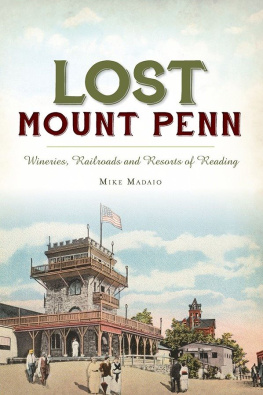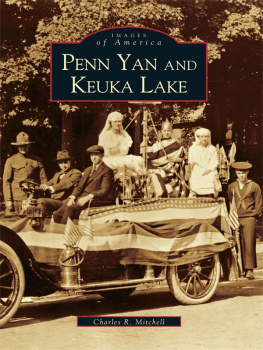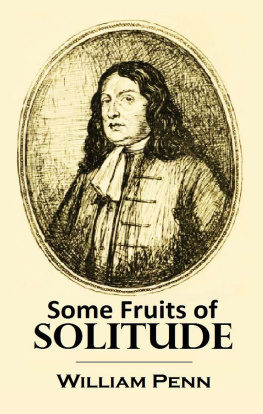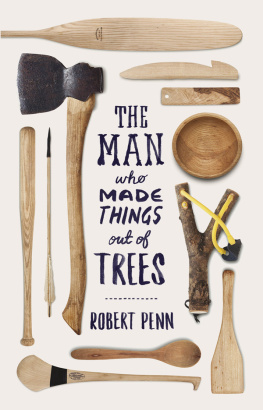First published 1990 by Westview Press
Published 2018 by Routledge
52 Vanderbilt Avenue, New York, NY 10017
2 Park Square, Milton Park, Abingdon, Oxon OX14 4RN
Routledge is an imprint of the Taylor & Francis Group, an informa business
Copyright 1990 by Taylor & Francis
All rights reserved. No part of this book may be reprinted or reproduced or utilised in any form or by any electronic, mechanical, or other means, now known or hereafter invented, including photocopying and recording, or in any information storage or retrieval system, without permission in writing from the publishers.
Notice:
Product or corporate names may be trademarks or registered trademarks, and are used only for identification and explanation without intent to infringe.
Library of Congress Cataloging-in-Publication Data
Births and power: social change and the politics of reproduction/
edited by W. Penn Handwerker.
p. cm.
ISBN 0-8133-7787-0
1. Human reproductionSocial aspects. 2. Human reproduction
Political aspects. 1. Handwerker, W. Penn.
QP251.B6 1990
306.4'61dc20 89-77272
CIP
ISBN 13: 978-0-367-01325-7 (hbk)
Politics and Reproduction: A Window on Social Change
W. Penn Handwerker
The birth of a child is a political event. So is its absence, for any or all of the events that comprise human reproduction may be part of a strategy to acquire or extend power, may create new ties of dependence or may provide a means to break ties of dependence. Governments seek to regulate reproduction in a variety of ways, often without being aware of the political effects of what they do. Power blocs within a society construe reproduction according to their own agendas. The regulatory means they seek may or may not conflict. But power bloc agendas may blind all parties to the interests and goals of the people they seek to regulate. Reproduction may constitute a statement of defiance to political gatekeepersto parents, as when an adolescent girl becomes pregnant in spite of her parents' wishes; or to national or local governments, as when women have more children than those policymakers deem appropriate, or when they have fewer, as has happened recently in eastern Europe. Reproduction may weaken or strengthen governments. The continuous production of new generations provides resources that governments may use, but it also provides a population that must be fed, clothed and housed. Different sectors of a population may grow at different rates. Differential growth of this kind shifts the basis of political power and may change profoundly the political complexion of a society.
Human reproduction is not often thought of in these terms. Rather, childbirth and the events that surround and follow it usually are construed as biological events which, for parents in our society, tend to be perceived as individually significant and as statements of our individuality; which, for social scientists, may both reflect and affect various social and economic processes. This book makes the point that births are generated by power relationships. Births are individually significant, of course. Births are significant within societies, however, only insofar as they cement or change power relationships.
This book is not about politics narrowly conceived as what goes on within the confines of a formal political system. It is about politics in the generic sense that Harold Lasswell identified when he asked "Who gets what, when, and how?" (1936). This book is thus about power where it comes from, who has it, how you acquire it, what happens when you do, and what happens when you don't. Power relationships shape the character of social relationships and channel the direction of social change. The authors of the chapters that follow explore relationships between power, human reproduction, and the social relations that reproductive behavior reflects, and may change. In the process, they help us better understand issues like
- why some women have large families and other women have small ones;
- how to reduce high birth rates in Less Developed Countries and high teenage pregnancy rates in countries like the United States;
- the failure of family planning programs;
- the intense public debate about abortion in the United States; and
- why some women act in ways that dramatically increase their risk of AIDS (Acquired Immunodeficiency Syndrome).
We shall also see how shifts in power relationships transform the economic, social, and moral dimensions of human behavior. Power accrues to individuals or organizations to the extent to which they control access to strategic resources. Power relationships thus dictate key properties of human social relationships, including the way in which they are morally evaluated and construed in social interaction. Power inequalities generate hierarchical social relationships in which those with power tend to coerce and exploit the powerless, even if they do so unintentionally or unconsciously. People who are powerless, in turn, use a variety of means to subvert the power of resource gatekeepers. These political dynamics both reflect and generate conflicting models of moral responsibility, and constitute one of the most important driving forces of social change.
What Is Power, Who Has It, and How Can You Get It?
Power is the ability to influence or control the behavior and beliefs of others even without their consent. You know who has power over youanyone or any organization that influences your ability to get access to the resources that you need to live. So it is with the people you will meet in this book. We shall call the people and organizations with power gatekeepers, to highlight their role in resource access. The gatekeepers you will meet in this book include children; women as mothers and wives; men as fathers and husbands; schools and teachers; employers, both public and private; and health care providersnurses, midwives, physicians, and medical care organizations.
We could use the word resource to refer to virtually anything and, if we did, it would become meaningless. I will use the word to refer to the energy and nutrients that are necessary for human life, and to all means (access channels) by which they can be acquired. Thus, resources are the foods that provide energy and nutrients. Money, land, labor, education, berries, hoes, nets, cattle, husbands, or friends also may be "resources," depending upon the time and place one analyzes. So may any other thing, behavior, concept, or form of life that facilitates resource access either directly or indirectly.
Any means by which a person can gain access to resources can be thought of as a "channel" to that resource. Resource access channels may be sets of activities, a person or people, an organization, or some combination of activities, people, and organizations. For example, the activities that constitute "marriage" or a "wedding" would be a resource access channel if husbands or wives are resources. Access channels to the resource of a job may include the activities that constitute "education," a school organization, or individual teachers, employers, friends, or relatives. Gatekeepers, as indicated earlier, are individuals or organizations that function as resource access channels. Health care providers and health care organizations are gatekeepers because illness, disability and death reduce resource access, or threaten to. Thus, you acquire power when you find a way to serve as a resource channel gatekeeper for other people or organizations.












